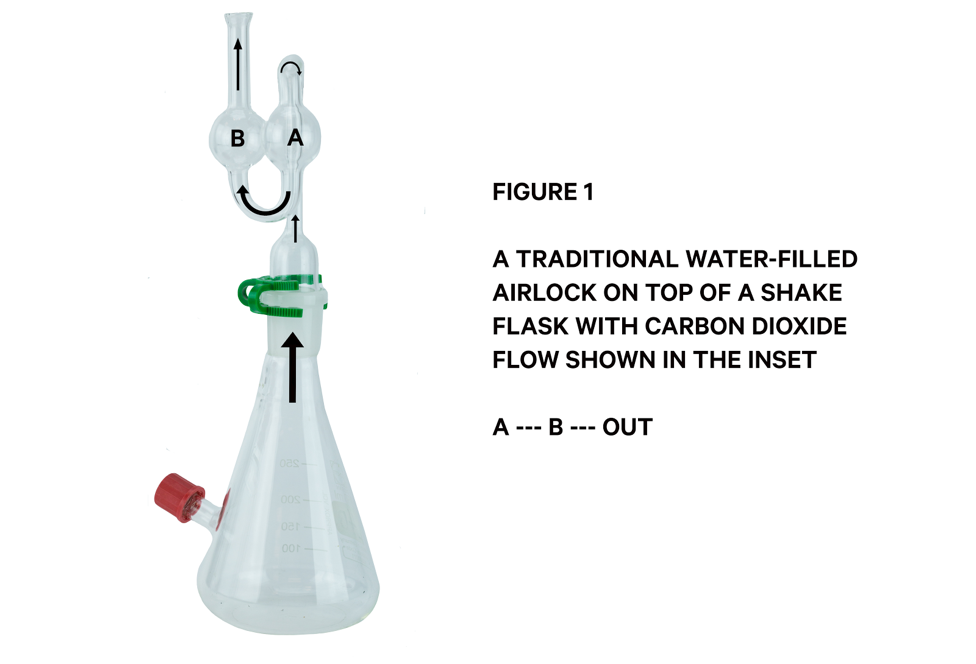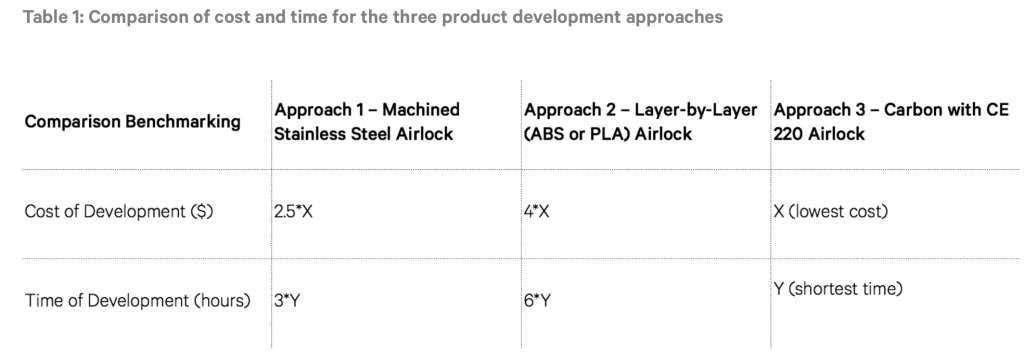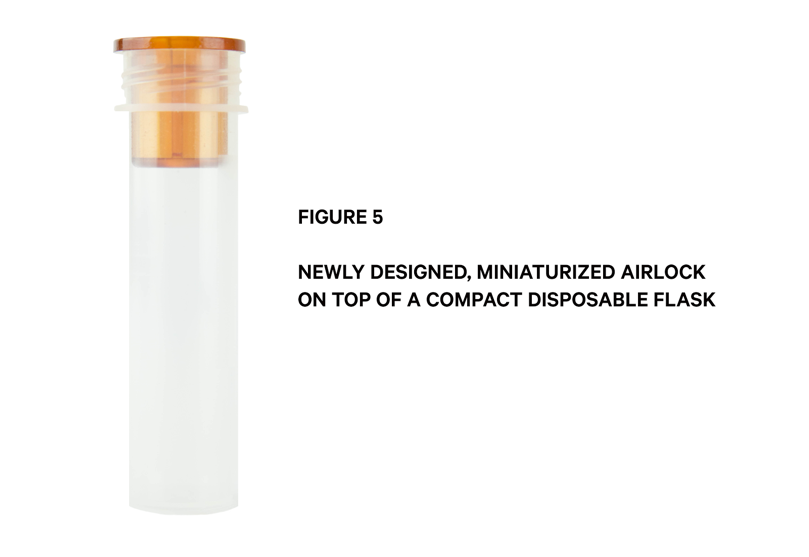The speed and quality of Carbon’s trademark Digital Light Synthesis, is helping its CLIP 3D printer technology gain traction in applications for series production of end-user parts.
In a project for the R&D branch of multinational computer technology corporation Oracle, CLIP 3D printing was previously used to produce 10,000 parts for Oracle Labs servers.
A new project from the University of Adelaide, Australia, has applied the technology to redesign small batch wine production, and plans to produce the 3D printed parts in their thousands.
Cheers to that!
To test a new product before it goes to market, small batches must simulate the rate of chemical reaction (kinetics) in wine produced at volume.
Simulating this process is traditionally done using a system of glass flasks that control fermentation through water-filled airlock stoppers.

These stoppers protect yeast from oxygen, which essential to the breakdown of sugars needed to produce alcohol. The airlocks also release waste carbon dioxide produced in the process.
Redesigning the wine lock
In an effort to better understand the yeast fermentation process, University of Adelaide researchers Professor Vladimir Jiranek and Dr. Tommaso Watson, proposed a robotic system of sampling batch flasks.
In this system, a robotic arm automatically extracts liquid samples from the flasks, eradicating human-error margins, and reducing the amount of manual steps.
In order to fit the flasks onto a static platform for robotic sampling though the airlock stopper, unchanged for decades, had to be redesigned.

Better than steel and FDM
Jiranek and Watson tried two alternative airlock fabrication methods before reaching a Carbon solution: first one machined in stainless steel, and then another using an FDM/FFF 3D printer.
Both methods came with their fair share of advantages. Importantly the steel component was capable of 121 degree sterilization. By comparison, the FDM 3D printed part was resistant to corrosion and didn’t damage the glass flasks. Still neither option provided the team with an adequate solution.
Enlisting the help of leading contract manufacturer The Technology House (TTH), Jiranek and Watson designed airlock components to be made on Carbon M Series 3D printers, out of high-temperature CE 220 resin. The method was a revolutionary result for the project.

Locked in on Carbon CLIP
Carbon CLIP airlocks proved to have the cheapest production cost and shortest development time. In addition, the design was dramatically streamlined, lightweight, and still resistant to high sterilization temperatures.

Miniaturization of the parts also helped the researchers exceed their initial goal of producing 96 flasks to 384.
According Carbon’s case study of Jiranek and Watson’s research, “The University of Adelaide with TTH’s continued partnership plans to produce and use thousands of these CE 220 airlocks over the next few years.”
Wine not? Adelaide plans to 3D print thousands of CE 220 airlocks over the next few years. Volume wine production clip via bertolasoTV on YouTube
3D printing for series production
Making end use parts at volume is one of the ways 3D printing will find validation within existing manufacturing processes, and Carbon isn’t the only company working toward this end.
A high-value partnership between EOS, Daimler and Premium AEROTEC seeks to up-scale 3D printing in the NextGen AM project. Formlabs and New Balance also have a partnership for continuous, 3D printed production of footwear.
Series production is expected to be one of the key themes of 3D printing industry conferences and expos coming at the end of the year.
Stay up to date with 3D Printing Industry’s coverage of this year’s key events by liking us on Facebook and following us on Twitter.
You can also sign up to our regular newsletter for industry updates, and register on our 3D printing jobs site.
Featured image: Carbon 3D printed airlock for wine resigned by researchers at the University of Adelaide. Photo via Carbon3D.com


